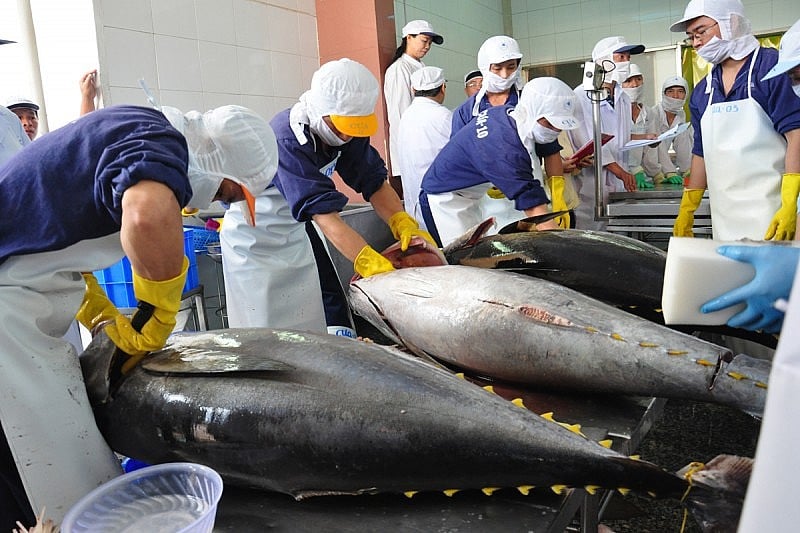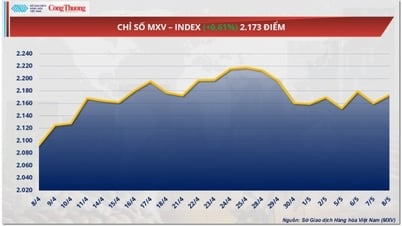| The Middle East is currently the 4th largest tuna export market of Vietnam. Taking advantage of the EVFTA Agreement, tuna exports to the EU have increased rapidly. |
According to statistics from the General Department of Customs, in the first month of 2024, Vietnam's tuna exports to the EU market continued to grow compared to the same period in 2023, with an increase of 96%, reaching more than 17 million USD.
 |
| Exports of fresh, frozen and dried tuna to the EU market increased 317 times |
Vietnam's tuna exports to the EU in the first month of 2024 all increased compared to the same period last year. Notably, exports of fresh, frozen and dried tuna code HS03 (except frozen tuna meat/loins code HS0304) increased 317 times. Exports of other processed tuna, mainly frozen steamed tuna loins, increased more than 9 times.
This shows that tariff incentives under the EU-Vietnam Free Trade Agreement (EVFTA) are creating great attraction for Vietnamese tuna products in the first month of the year.
In January 2024, Vietnamese tuna was exported to 21 EU member countries. Of which, Italy, Germany and the Netherlands are still the three largest tuna import markets of Vietnam. Currently, exports to all three markets mentioned above have grown well compared to the same period.
Notably, in the Italian market, tuna exports to this market continued to maintain a "galloping" growth momentum in the first month of 2024, with an increase of 364% compared to January 2023. Italy is currently the largest importer of fresh and frozen tuna from Vietnam.
Along with Italy, tuna exports to Poland are also increasing sharply. While in January 2023, Vietnam did not export many orders to this market, in 2024 Poland is currently the 4th largest tuna import market in the bloc with sales reaching more than 1.6 million USD.
In addition to Poland, exports to Sweden, Belgium and the Republic of Cyprus are also increasing rapidly, up 11 times, 2 times and 5 times respectively.
According to the Vietnam Association of Seafood Exporters and Producers, tuna exports to the EU are expected to continue to increase in the first quarter of the year due to the impact of tariff incentives under the EVFTA. Although raw tuna prices in the world market have cooled down, tensions in the Red Sea have caused high freight rates, which will keep the price of finished tuna high, curbing demand in the markets.
In addition, the 'IUU yellow card' continues to be a challenge. If it is not resolved in 2024, it will cause exports to the EU to stagnate because the procedures for confirming and certifying exploited seafood are still inadequate due to inadequate resources, human resources and infrastructure. Industries such as tuna will be most affected...
Source






![[Photo] Prime Minister Pham Minh Chinh chairs a special Government meeting on the arrangement of administrative units at all levels.](https://vphoto.vietnam.vn/thumb/1200x675/vietnam/resource/IMAGE/2025/5/9/6a22e6a997424870abfb39817bb9bb6c)
![[Photo] Magical moment of double five-colored clouds on Ba Den mountain on the day of the Buddha's relic procession](https://vphoto.vietnam.vn/thumb/1200x675/vietnam/resource/IMAGE/2025/5/9/7a710556965c413397f9e38ac9708d2f)


























































































Comment (0)